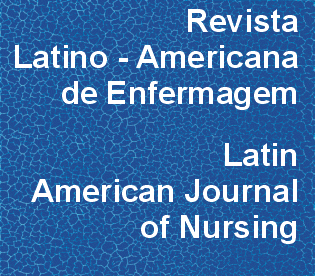The use of medications by elderly men with polypharmacy: representations and practices
DOI:
https://doi.org/10.1590/0104-1169.3004.2372Abstract
OBJECTIVES: this study aimed to investigate and understand the use of medications by elderly men, their representations and the subsequent practices. METHODS: this is a qualitative, descriptive and exploratory study, in which there participated 17 elderly men, with polypharmacy, and assisted under the Family Health Strategy in the Municipality of Dourados in the Brazilian state of Mato Grosso do Sul (MS). RESULTS: the results show that most of the medications are used for treating cardiovascular disorders. The elderly men develop strategies considering the prescription of these, adapting in line with their own perceptions and meanings. From these tactics emerge representations on youth and old age, in which old age is associated with illness. In addition, practices were observed which sought to associate the use of medications with medicinal plants, re-signifying the process of being ill. Different perspectives of masculinity permeate the use of medications, sometimes reinforcing hegemonic conceptions, and sometimes revealing alternate models of masculinity. The woman is present in the care with the use of the medications. CONCLUSIONS: in this context, the health team, above all that of nursing, must assist the elderly man in his practices of medication, taking into account his representations, his protagonism, and the role of the woman as a support in the care.Downloads
Download data is not yet available.
Downloads
Published
2013-12-01
Issue
Section
Original Articles
License
RLAE’s authorship concept is based on the substantial contribution by each of the individuals listed as authors, mainly in terms of conceiving and planning the research project, collecting or analyzing and interpreting data, writing and critical review. Indication of authors’ names under the article title is limited to six. If more, authors are listed on the online submission form under Acknowledgements. The possibility of including more than six authors will only be examined on multicenter studies, considering the explanations presented by the authors.Including names of authors whose contribution does not fit into the above criteria cannot be justified. Those names can be included in the Acknowledgements section.
Authors are fully responsible for the concepts disseminated in their manuscripts, which do not necessarily reflect the editors’ and editorial board’s opinion.
How to Cite
The use of medications by elderly men with polypharmacy: representations and practices . (2013). Revista Latino-Americana De Enfermagem, 21(6), 1337-1344. https://doi.org/10.1590/0104-1169.3004.2372



